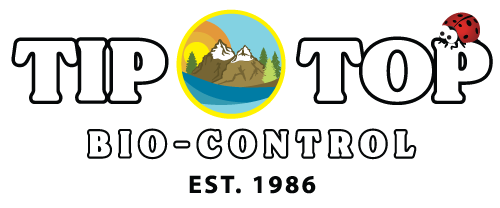Thrips Control

A common pest found in greenhouses and indoor/ outdoor gardens, Thrips damage plants by sucking their juices and scraping at fruits, flowers and leaves. Plant leaves may turn pale, splotchy, and silvery, then die. Injured plants are twisted, discolored and scarred.
Think Preventative
Adult and larval stages of Thrips feed on foliage and flowers causing extensive damage in a short time period under the right conditions. Damage typically shows up as stippling, silvering of the leaves, or discolored patches on the leaf surfaces, but can also be identified by the unique twisting they cause in new growth. Proactive control is important to limit risk of Thrips vectoring disease through feeding.
So what works best for Thrips control?...
Amblyseius Cucumeris: works well for immature THRIPS. A wide range of Thrips species. Western Flower Thrips, Chilli Thrips. Also preservative/low infestations Broad Mites, Cyclamen and Two-Spotted Spider Mites.
Orius insiduous AKA minute pirate bug - Attacks all Thrips life stages. Best known for their ability to attack and control adult Thrips as well as immature Thrips.
Hypoaspis Miles: Attacks Thrips Eggs, Fungus Gnat Larvae, Thrips, Sciarid Flies, Shore Flies, Root Aphids, Springtails, Root Mealybugs and Poultry Mites.
Ladybugs: Thrips, Aphids, Mealybugs, Mites, Whiteflies, etc.
Lacewing Larvae: Aphids, Mealybugs, Thrips, Spider Mites, Whiteflies, and other soft bodied insects.
Amblyseius swirskii: Broad Mites, Russett Hemp Mites, Thrips, Whitefly Eggs, Spider Mites, Tarsonemid Mites, and other Mite Species.
Beneficial Nematodes SF: Thrips, Fungus Gnats, Cutworms, Fire Ants, Weevils and over 200 other soil-dwelling pests.
Hang Blue or Yellow Sticky Traps within the growing area to monitor pest populations. For Western flower thrips use the Pest Wizard Trap Kit.
